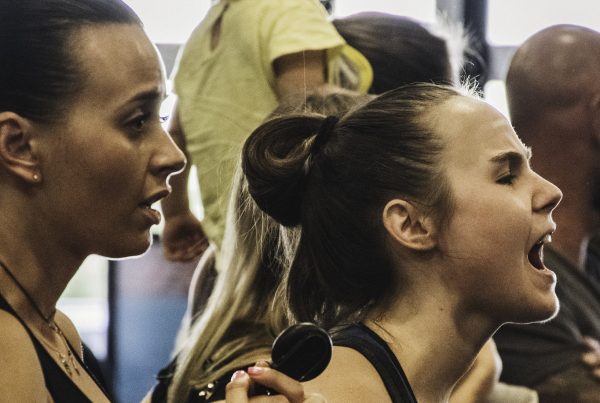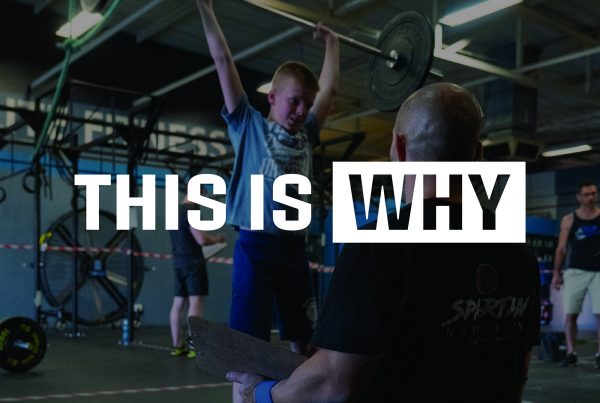April is going to be Health Month on the CFJ blog. We’re going to cover a variety of health topics during the month, including common topics like nutrition and flexibility, as well as lesser covered areas like mental and cardiovascular health. Please don’t just read, ask questions via the comments section on the blog posts and feel free to request topics that I might not cover. If it’s something I don’t know enough about, I’ll find an expert in that area to write about it.
To kick the month of we first need to revisit CrossFit’s definition of fitness and cover how we define (and measure) health. It’s going to mean a long post to start the month, so grab a cuppa, put your headphones on and have a read 🙂
Fitness, as defined by CrossFit, is increased work capacity across broad time and modal domains. That means to be fit you need to be able to perform well in all task durations – short, middle and long distance – and at any physical task imaginable. Pretty broad definition, yeah? That’s exactly the point. The ultimate aim of the program is to prepare you for the unknown and unknowable. How do we attain that? By adhering to CrossFit’s four models of fitness.
- The 10 General Physical Traits
These are cardiovascular/respiratory endurance, strength, flexibility, stamina, balance, coordination, accuracy, agility, power and speed. A regimen develops fitness to the extent that it improves each of these 10 skills. - The Hopper
Think about a barrel loaded with an infinite number of physical challenges where challenges are drawn at random. This model suggests that your fitness can be measured by your ability to perform well at all of the challenges. - The Energy Systems
These are the “engines” that provide the energy for all human action. The phosphocreatine system for activities up to 10 seconds in duration, the glycolytic for activities up to two to three minutes, and the oxidative/aerobic for activity lasting longer than two to three minutes. Total fitness requires training and capacity in each of three pathways. - The Sickness-Wellness-Fitness Continuum
This is where we start getting into the health side of things, and it’s where CrossFit is worlds apart from any other fitness regimen. We actually include a health component to our model of fitness! Every measure of health can be placed on a continuum that moves from sickness to wellness to fitness (Figure 1). Fitness is therefore “super-wellness.”
A marker missing from that figure is mental health, but only because there is no single measure for it. Rather, there are a huge array of self-report questionnaires used to evaluate mental health. Just as all other markers are mitigated by diet and exercise, so are mental disorders.
This model of fitness states that sickness, wellness and fitness are all measures of the same entity – health, and that you’re healthy when all your health markers are on the fitness side of the continuum.
Given that we’re focusing on health, that fourth model of fitness is most pertinent for this month. But for me as a coach and as the person directing all systems at the CFJ facilities, it’s the most important part of what we do.
I had to cover the definitions of fitness first because it includes that fourth model of fitness and because it leads into how we define health.
The conventional definition of health is “a state of being free from illness or injury.” What. A. Joke. As long as you have no form of illness and are uninjured, you’re healthy. It doesn’t matter if you can’t pick your grocery bags up, get yourself up out of a chair, or throw a ball to your kids.
We define fitness as work capacity across broad time and modal domains – having you all the way to the right of that continuum. And we define health as work capacity across broad time and modal domains throughout life. Health is fitness across one’s age – sustained fitness. It might not make sense initially so head back up to re-read the models of fitness, especially spending time on the fourth one. The first three models keep you to the right of that continuum – not just “well” but fit. Keeping you there throughout life ensures that you stay healthy.
All of this defines the best practices at CFJ facilities. Picture twin sisters aged 65. One is healthy by the conventional definition. Her health markers are only good enough to place her on the wellness part of the equation. Although she has good health markers, she is physically inept – she’s unable to play with her grandchildren. Her sister, in contrast, is physically capable. She gardens, goes to the gym, is part of a running club and runs rings around the grandchildren. However, although she is physically capable she has always had poor dietary habits and therefore her health markers are in fact on the sickness end of the continuum. She’s on chronic medication and is at high risk of experiencing an untoward cardiovascular event. Yeah, “it fits her macros” and keeps her lean, but she’s going to die of a heart attack, in her sleep.
Who would you rather be?
That was a trick question. I hope you said “neither one of them!”
It’s a simple analogy to illustrate what I meant by “best practices.” What good are we doing if we’re getting your fitness markers up, but your health markers aren’t changing, or worse yet, diminishing with age? This drives our methods in class, but also all the information we provide you that should be guiding your habits outside of the gym.



